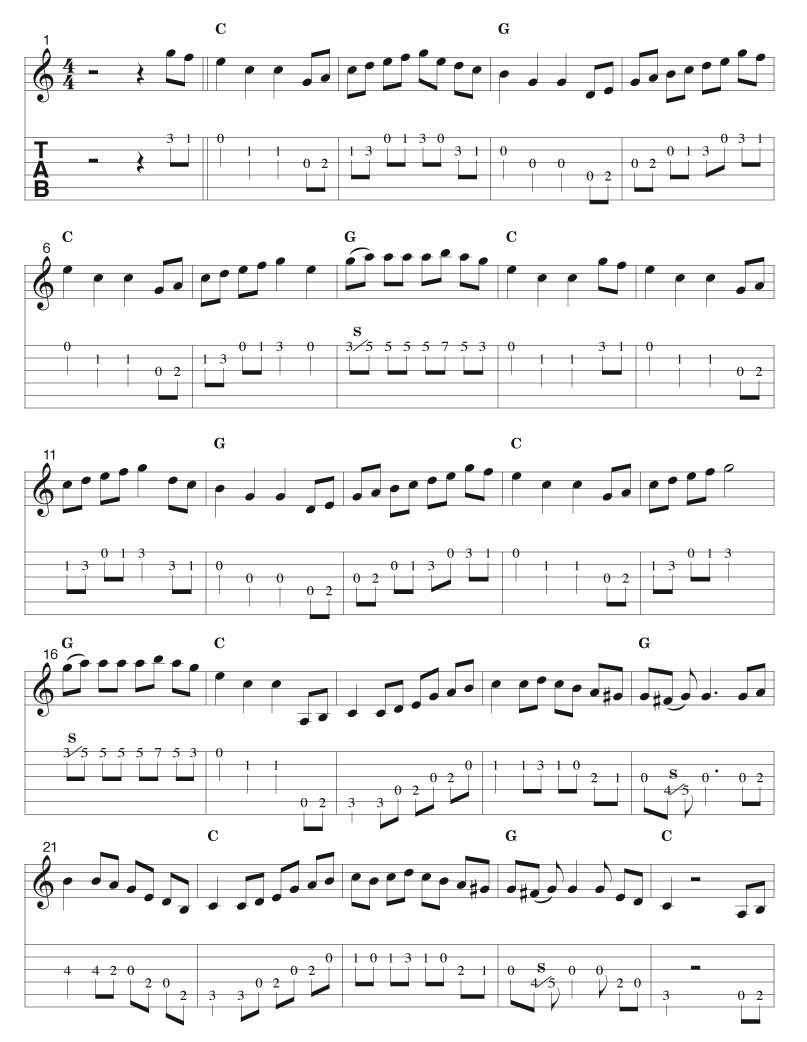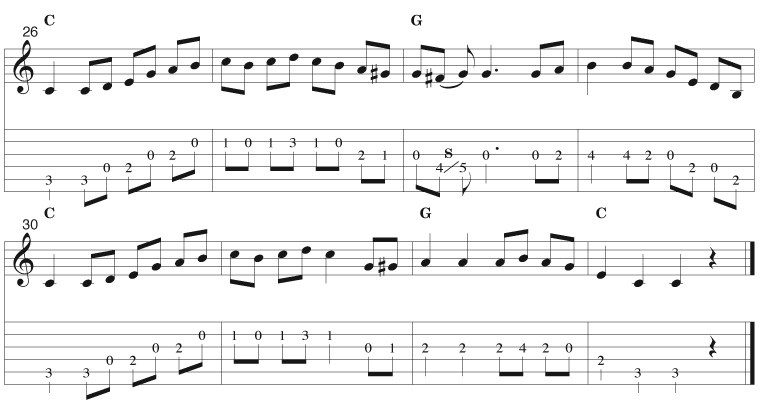|
April 2009 Free Flatpicking Lesson
from
Flatpicking Guitar Magazine
The Tennessee Wagoner
Welcome to FGM’s free lesson portion of our monthly e-newsletter.
Every month I feature new tunes, picking techniques, and musical ideas
-- I even try to throw in some sound flatpicking wisdom every now and
then. It is my continued goal as your e-instructor to load up eager
flatpickers with new melodies, cool arrangements of flatpicking
standards, and to instill an overall creative approach to your
practicing and playing. This month I’d like to present you with the
Tennessee Wagoner, a melody that, to me, has a great flatpicking groove
and the chords are easy!
Depending on who you pick with, the
Tennessee Wagoner may or may not seem like an obscure old-time tune.
This melody, although not as often picked as Arkansas Traveler or Red
Haired Boy, has made its way from complete obscurity to enjoy somewhat
of a resurgence. One of my favorite recorded versions is found on an
Acoustic Disc release entitled Doc and Dawg. Doc Watson, Jack Lawrence
and David Grisman are picking an old-time medley and this tune is found
sandwiched between the East Tennessee Blues and the Beaumont Rag. From
the first time a heard it I knew that I would have to learn to pick that
song on the guitar.
Although the chord progression in
my arrangement consists of only two simple chords, (G and C) I still
find the backup to be extremely interesting -- The musical relationship
between the I chord ( C ) and the V chord ( G ) is the purest resolution
that exists in music. If a song is going to have just two chords, the I
and the V are the two to have -- in fact, this song is a perfect
example of how a two chord song with a I and a V can sound so pleasing.
When dealing with such a simple chord
structure, the rhythmic groove becomes extremely important because all
we have harmonically are those two chords -- we are trying to get as
much rhythmic emotion out of the I - V relationship as we can. One
should never find playing flatpicking backup to be lackluster; rather,
one should seek to find the subtlety and nuance of even the most simple
two chord songs.
The melody is a great example of one of my favorite ideas -- the
question and answer idea! A great fiddle tune usually consists of four
sentences. The first phrase can be thought of as a musical question. In
this case, the question is stated over a C chord. Next, we play a
musical answer -- for the Tennessee Wagoner, our question is played by
doing the same “lick” over a G chord. For the third sentence it is very
customary to repeat the initial question and finally finish up with the
fourth sentence which is a more defined answer commonly called the
“Tag.” By doing this we are allowing the music to tell a story. I look
at fiddle tunes like short stories -- as compared to the “novel” of a
classical piece.
One particular point of interest that I would like to point out is in
the tag of the “A” section where we play an ‘a’ note over the G chord.
For those of you that are into theory you will note that this is playing
the 2nd or 9th over the G chord. We are always taught to outline chord
tones, but in this case, the 9this really carrying its own weight. To
me, it authentically turns it into an old-time tag! Some might refer to
this unexplainable coolness to be redneck-jazz.
I hope you all enjoy practicing this
tune and adding it to your list. It’s simple enough to share with any
local jam session and has endless room for jamming capabilities. Drop me
a line at [email protected]. What tunes would you like to see
featured here in the future?


|